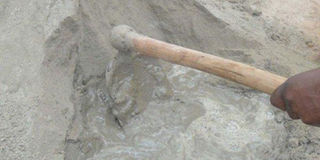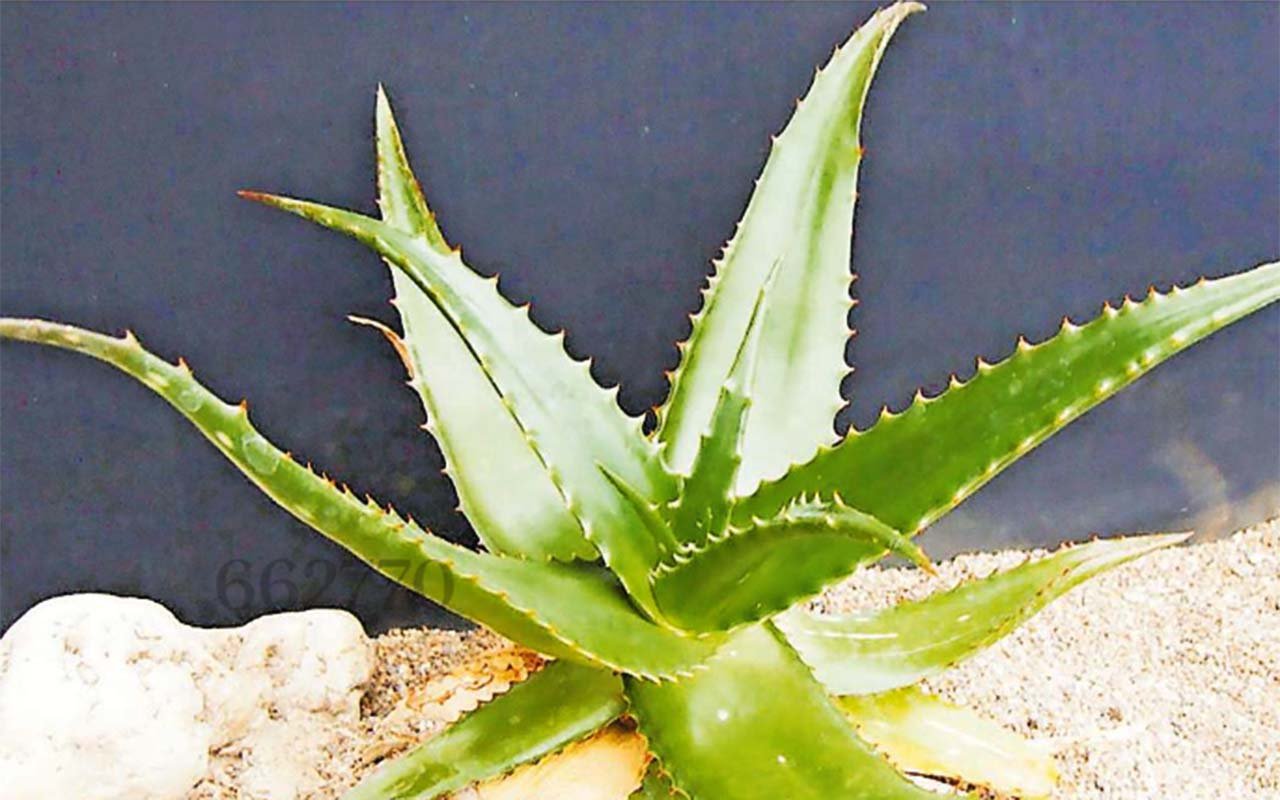Prime
The things you must know about your cement

Make sure that your cement is well mixed with other materials, usually one bag of cement with three bags of cement. Photo by Christine Katende.
What you need to know:
Cement adulteration is basically the addition of non-cement material to cement. Where cement is supposed to help in bonding to get strength needed for structures, this adulterated cement will refuse to bind when mixed during construction.
In a press conference held in June, 2012, the Uganda National Bureau of Standards (UNBS) launched a campaign in collaboration with East Africa Cement Producers Association (EACPA) Uganda Chapter, Kampala City Traders’ Association (KACITA), Uganda Manufacturers’ Association (UMA) and Uganda Institute of Professional Engineers. The main goal was to alert the public about the increasingly rampant adulteration of cement.
In addition to losing its binding ability, the cement that has benn adulterated has reduced strength resulting in weak structures. Most of the adulteration takes place in warehouses and/or at the construction site.
So if you are building or thinking about building, here are some of the things you need to know about the cement you are using:
Cement texture
Cement is supposed to be very fine, according to UNBS’ Richard Ebong (Head of Surveillance Division). If when it has lumps of any kind, you shouldn’t trust it. Stone dust is a common addition when cement is adulterated so lumps of any size are an indication of the otherwise fine cement.
Aside from the stone particles, many other items may give away, through texture, the additions that have been made.
Colour of the cement
Whether dark or light, the cement in one bag should be of uniform color. It should not be white in places then dark gray in others. Usually, when it has been tampered with, a bag is opened and a little poured out then non-cement materials like crushed anthill soil, sand, ash and clay are added. The cement at the top of the bag may therefore have a different color from that at the bottom, or vice versa.
Bag integrity
The bag is probably the easiest thing to check, if you would like to know whether it has been compromised after it was acquired from the industry. There are two things you especially need to look out for:
Spout. Look closely at the area around the spout of the cement bag to see if it has been tampered with.
Glue. You may find fresh glue on the bag that was used for re-packaging. “The glue cannot still be fresh when the bag was transported all the way from Tororo,” Mr. Ebong says.
Re-bagged cement
There are times when the bags of cement have to be re-packaged at the distribution points with the authorised dealers. This is to cater for the bags that may break during transportation. However, the allowance is supposed to be for no more than three bags for every 1,000 bags that were transported and they will be clearly labelled as re-bagged. There should not be more than the allowed amount and be sure to check for the re-bag label on your bags.
Buying in bulk
When buying cement in bulk, be sure to use transporters you know. UNBS cautions that while they are able to get some of this adulterated cement, they have found that most of the adulteration is done while the cement is in transit from factory to site. If you don’t know your transporter, then you should find time in your schedule to escort them as they move your cement.
Warehouses
While you may be unable to buy and transport your cement directly from Kasese (Hima Cement) or Tororo (Tororo Cement), you should be cautious which warehouse you use. Dr.Ben Manyindo, Executive Director of UNBS, pointed out a popular warehouse in Nakasero Market as one of the warehouses that are not completely trustworthy.
He says that the bureau has got a number of calls regarding this warehouse where adulteration is reportedly done at 3 a.m in the early morning. Unfortunately, the bureau has never been able to catch the culprits red-handed.
Weight
Cement is weighed and placed in bags of 50Kgs. However, when cement is taken out and other non-cement materials added, this will naturally create a discrepancy in weight. Pick out a few random bags from those that you have purchased and test weight them for the correct weight.
Price
Cheap prices are a red flag. It might be advantageous to be able to get your cement at a lower price, but please be advised that cement is on average Shs30,000 a bag.
Disposing of cement bags
Dr. Manyindo points out that the empty bags (from the cement you have already used) contribute to more than 50 per cent of the adulteration that has become a big problem in construction. Be cautious of how you get rid of these bags, once emptied. EACPA’s Representative Mr. Brice Houeto, advises that you dispose of them on site. Tear up these bags before disposal or burn them so they cannot be re-used for unauthorised re-packaging.
Mixing
Cement is mixed in a ratio of 1:3 (for every one bag of cement, you mix it with three bags of sand), Sam Kavuuma who has been in the construction business for 10 years says. The construction industry is dominated by non-professionals, Eng. Jackson Mubangizi of Uganda Institution of Professional Engineers admonished.
He cautioned that because the public likes things cheap, we end up hiring non-professionals that don’t know what they are doing. While the bureau might get a number of calls about the quality of cement, there are times when it is a false alarm and the actual problem is poor workmanship.
Be sure to have you (if you are the builder) or your contracted builders (if you aren’t the builder) have the correct proportions for mixing. Otherwise, it will not bind.
Cement manufacturers
The Bureau of Standards is the nation’s regulatory body as regards to the standard of product in the country. Use cement from manufacturers that have been approved by the bureau. The two cement-producing companies that have been approved, in Uganda, are Hima Cement Ltd in Kasese and Tororo Cement Ltd in Tororo.




